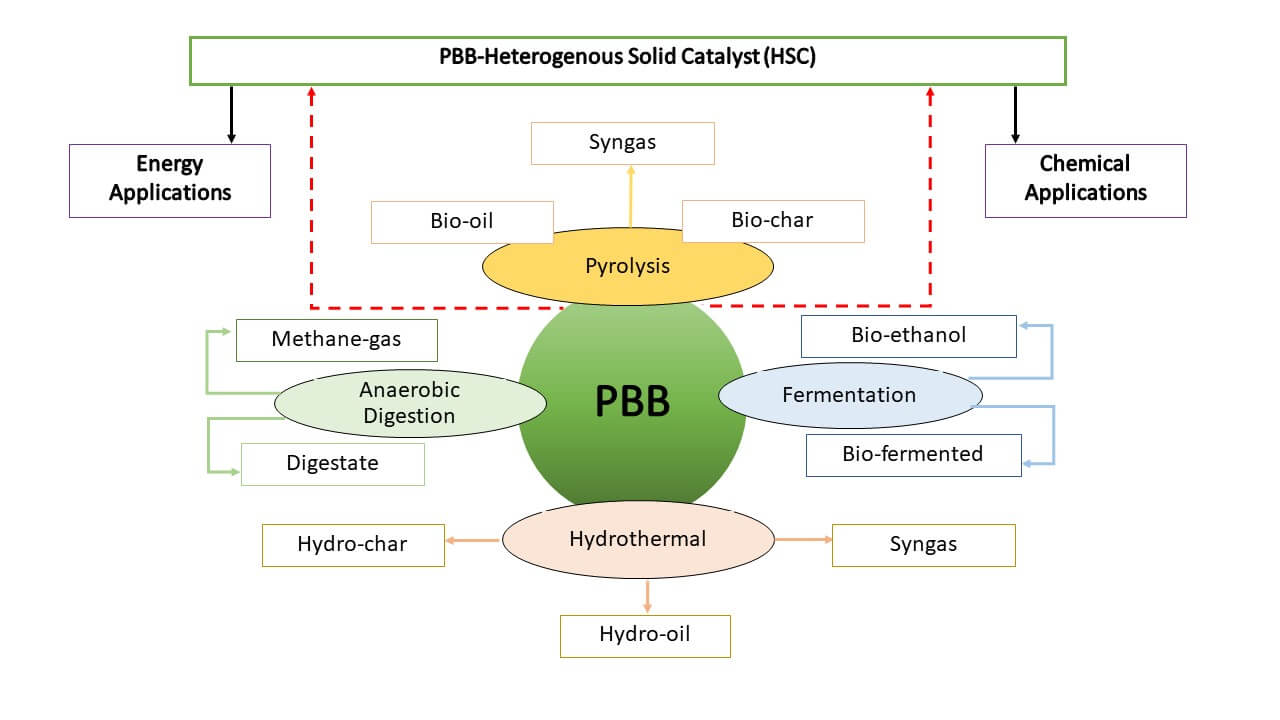 Open Access
Open Access
REVIEW
Biofuel Recovery from Plantain and Banana Plant Wastes: Integration of Biochemical and Thermochemical Approach
1
School of Environment and Civil Engineering, Nanchang Institute of Science and Technology, Nanchang, 330108, China
2
School of Infrastructure Engineering, Nanchang University, Nanchang, 330031, China
3
Institute of Environmental Science, Shanxi University, Taiyuan, 030006, China
4
State Key Joint Laboratory of Environment Simulation and Pollution Control, School of Environment, Tsinghua University, Beijing,
100084, China
* Corresponding Author: Abdulmoseen Segun Giwa. Email:
Journal of Renewable Materials 2023, 11(6), 2593-2629. https://doi.org/10.32604/jrm.2023.026314
Received 30 August 2022; Accepted 20 October 2022; Issue published 27 April 2023
Abstract
Globally, fossil fuel dependence has created several environmental challenges and climate change. Hence, creating other alternative renewable and ecologically friendly bio-energy sources is necessary. Lignocellulosic biomass has gained significant attention recently as a renewable material for biofuel production. The large amounts of plantain and banana plant parts wasted after harvesting, as well as the peels generated daily by the fruit market and industries, demonstrate the potential of bioenergy resources. This review briefly assesses plantain and banana plant biomass (PBB) generated in the developing, developed, and underdeveloped countries, the consumable parts, and feasible products yield. It emphasized the advantages and disadvantages of the commonly adopted treatment technologies of composting, incineration, and landfilling. Further, the utilization of PBB as catalysts in biodiesel synthesis was briefly highlighted. To optimize recovery of biofuel, different integration routes of pyrolysis, anaerobic digestion, fermentation, hydrothermal carbonization, hydrothermal liquefaction, and hydrothermal gasification for the valorization of the PBB were proposed. The complex compounds present in the PBB (hemicellulose, cellulose, and lignin) can be converted into valuable bio-products such as methane gas and bio-ethanol for bioenergy, and nutrients to promote bioactive ingredients. The investigation of the viability and innovation potential of the integrated routes’ technology is necessary to improve the circular bio-economy and the recovery of biofuels from biomass waste, particularly PBB.Graphic Abstract

Keywords
Cite This Article
 Copyright © 2023 The Author(s). Published by Tech Science Press.
Copyright © 2023 The Author(s). Published by Tech Science Press.This work is licensed under a Creative Commons Attribution 4.0 International License , which permits unrestricted use, distribution, and reproduction in any medium, provided the original work is properly cited.


 Submit a Paper
Submit a Paper Propose a Special lssue
Propose a Special lssue View Full Text
View Full Text Download PDF
Download PDF Downloads
Downloads
 Citation Tools
Citation Tools